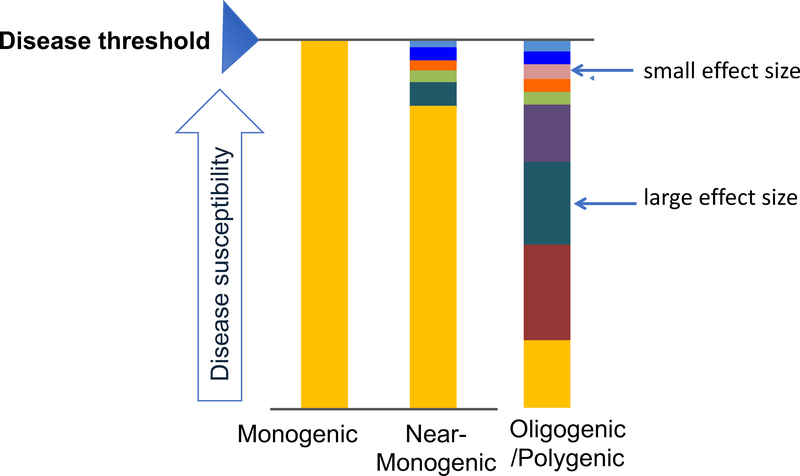Figure 1:
Evolving model of genetic architecture of inherited arrhythmias and cardiomypathies. In the classic monogenic model, a single disease-causing variant is sufficient for phenotypic manifestation. In most families with a disease-causing variant (i.e. mutation-positive), additional common variants with small effect sizes are needed to reach the disease threshold (near-monogenic). In mutation-negative families, the genetic architecture may be more complex, comprising multiple genetic variants with different effect sizes that together determine disease risk (oligogenic/polygenic), in addition to non-genetic factors. (Reprinted with permission from2.)

